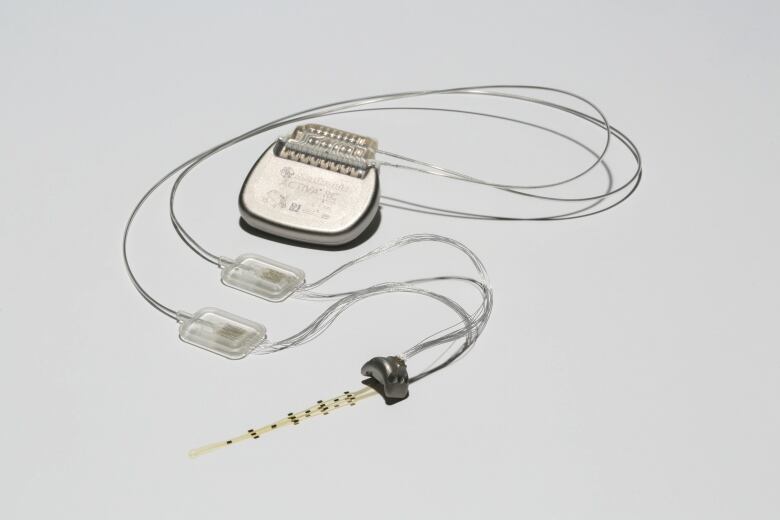Monkey regains control of paralyzed limb with wireless 'brain-spine interface'
Device bypasses spinal cord lesion so brain signals can reach neurons that activate leg muscles
In abreakthroughthat could have implications for people with spinal injuries, a primateregained control of aparalyzed limb with the help of a brain implant that wirelessly restored communication between its brain and spinal cord.
"This is the first time that you have a connection between the brain and the spinal cord that re-established movements," the study's leader, Grgoire Courtine,a neuroscientist at the cole Polytechnique Federale de Lausanne (EPFL) in Switzerland, told CBC News.
The findings from EPFL in collaboration with Medtronic, Brown University and Fraunhofer ICT-IMM, were published Wednesdayin the journal Nature.
Scientists have used wireless implants to restore movements before, but in those cases, serious hardware like a prosthetic limb or a mechanical exoskeletonwas required.
This new brain-spine interface, on the other hand, uses two surgical implants to wirelesslyrelay information withno cumbersome technology.

How it works
When the nervous system is fully functioning, a region of the brain called the motor cortexsends signals think of them as instructionsthat travel down the spine until they reach a neural network in thelumbar region. Those neurons then read theinstructions and activate muscles in the legs to produce walkingmovements.
A spinal cord injury stops thesignal from reaching its destination.
But with theinterface, the implant picks up the brain activity, sends it to a computer that decodes the signals, and relays those walking instructions to a spinal cord stimulatorembeddedinthe lumbar region.

"The link between the decoding of the brain and the stimulation of the spinal cord to make this communication exist is completely new," neurosurgeonJocelyneBloch of the Lausanne University Hospital, who surgically affixed the implants,said in a release.
"For the first time, I can imagine a completely paralyzed patient able to move their legs through this brain-spine interface."
A tool for physical therapy
There has yet to be human testing of the interface, and it's not clear whether it would work on people with severe spinal cord damage. The monkey in the study had a small lesion and would have eventually regained its motor functions on its own.
"You need to be realistic," Courtine said. "We don't imagine that tomorrow therewill be paralyzed people who will walk in the streets with a brain-spine interface. We are not there yet."
In the meantime, Courtine says the technology can havepractical applications for rehabilitating injured patients. Usually with physical therapy, a patient has to re-learn how to walk. In this study, the monkey was able to move with a natural fluidity right away.
"The key is there's no rehabilitation;there'snotraining on the animal,"Courtine said.
A feasibility studyalready under wayevaluates the therapeutic potential of thespinal cord stimulation technology, without the brain implant, to improve walking in people with partial spinal cord injuries.













_(720p).jpg)


 OFFICIAL HD MUSIC VIDEO.jpg)
.jpg)



























































































